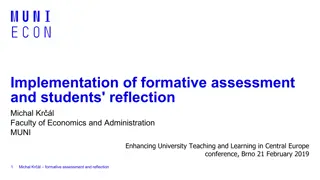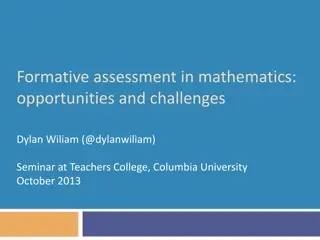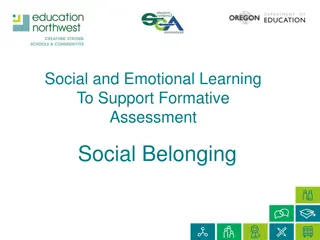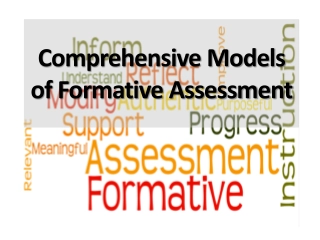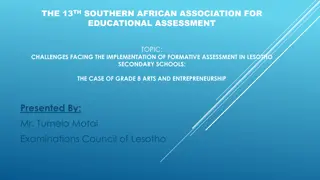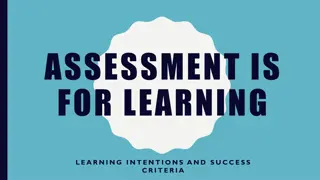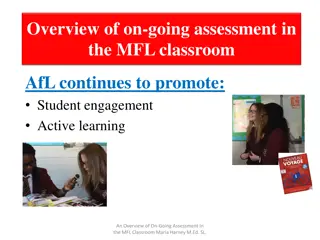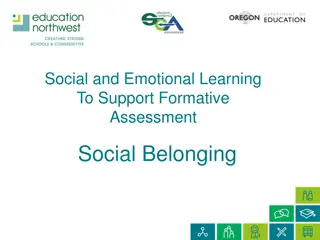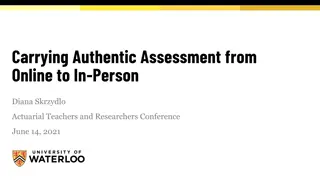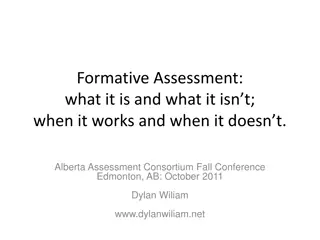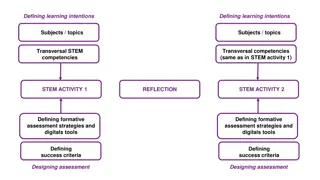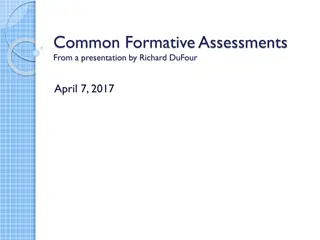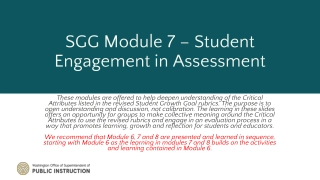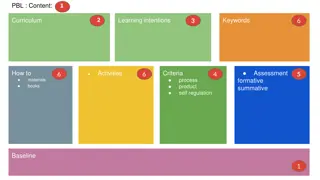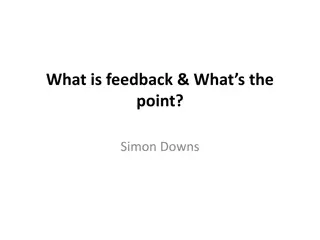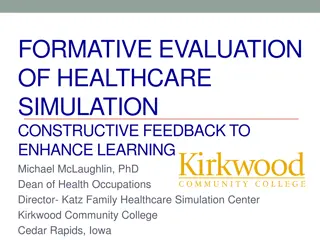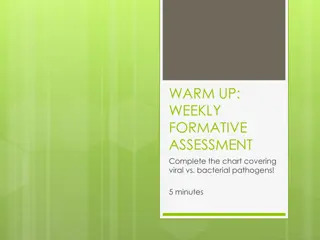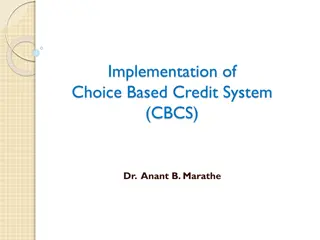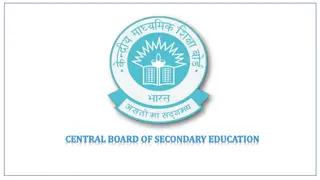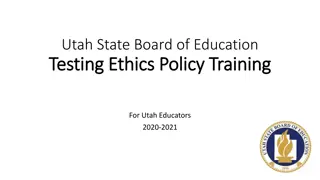Enhancing Student Learning Through Formative Assessment in Lecture-Based Courses
Formative assessment is a crucial tool for improving student outcomes in lecture-based courses. It allows educators to evaluate comprehension, identify learning needs, and adjust instruction to enhance student understanding. This article explores the methods, benefits, and implementation of formative assessment in large lecture settings, emphasizing alignment with course goals and instructional design. By integrating self-assessment and feedback, formative assessments facilitate student progress and bridge achievement gaps.
Download Presentation

Please find below an Image/Link to download the presentation.
The content on the website is provided AS IS for your information and personal use only. It may not be sold, licensed, or shared on other websites without obtaining consent from the author. Download presentation by click this link. If you encounter any issues during the download, it is possible that the publisher has removed the file from their server.
E N D
Presentation Transcript
Appropriate Use of Formative Assessment in a Lecture- Based Course DAN THOMPSON MANAGER OF INSTRUCTIONAL DESIGN AND EDUCATIONAL TECHNOLOGY
Todays Learning Objectives Identify methods of formative assessment that will assist in improving learner retention and student outcomes. Determine appropriate opportunities to implement formative assessments in the large lecture classroom to add value to the learning process. Create meaningful and valuable formative assessments.
What is Formative Assessment Formative assessment refers to a wide variety of methods that teachers use to conduct in-process evaluations of student comprehension, learning needs, and academic progress during a lesson, unit, or course. Formative assessments help teachers identify concepts that students are struggling to understand, skills they are having difficulty acquiring, or learning standards they have not yet achieved so that adjustments can be made to lessons, instructional techniques, and academic support. http://edglossary.org/formative-assessment/
More About Formative Assessment Two key additions need to be added to the previous definition to complete the formative assessment process: Students completing a self assessment Providing feedback to students Focus on the task, not the student Make sure feedback is given in a way students understand it
Whyand WhenShould we use Formative Assessment? Has a positive impact on student learning Improves overall student achievement Narrows the gap between low and high achievers Prepare students for summative assessments Help solidify basic information Opportunities for students to practice difficult content
Formative Assessment at OSU What forms of formative assessment do OSU faculty currently use? Nearpod ExamSoft assessments In and out of the classroom Team-based learning (TBL) Case-based learning (PBL) CPS Kahoot Panopto assessment items
Alignment! Formative assessments should be aligned with: School mission Course goals Learning objectives Instructional methods Summative assessments Integrate course content (systems courses)
Making it Count Make sure your use of formative assessment has a purpose Which content needs to be reviewed? Determine future instructional methods Reflect! What were my goals for teaching this session? How did I assess students learning of my LOs? How satisfied am I with my students progress? What area(s) should I target to improve student learning in this course
Formative Assessment Techniques TBL PBL Quizzes Small-group or large class discussion Articulate/Nearpod Interactive PPT presentations Think-Pair-Share
Formative Assessment Techniques Pre-class Assessment IRAT/GRAT Frequent classroom assessment breaks during class Take-home quiz Peer review Students reviewing their peer s short answer submissions
Moving Forward Match content with formative assessment technique Include method of providing feedback Faculty Peer Activity Preparation Organization Explanation clearly describe expectations to students
References Black, P., & Wiliam, D. (2006). Inside the black box: Raising standards through classroom assessment. Granada Learning. Formative Assessment. (2014, April 29). Retrieved September 4, 2016, from http://edglossary.org/formative-assessment/ Rushton, A. (2005). Formative assessment: a key to deep learning?. Medical teacher, 27(6), 509-513. The Value of Formative Assessment. (2006). Retrieved September 4, 2016, from http://www.fairtest.org/value-formative-assessment Yorke, M. (2001). Formative assessment and its relevance to retention.Higher Education Research and Development, 20(2), 115-126.
Thank you!! Questions?? Dan.thompson@okstate.edu @danthompsonidts


